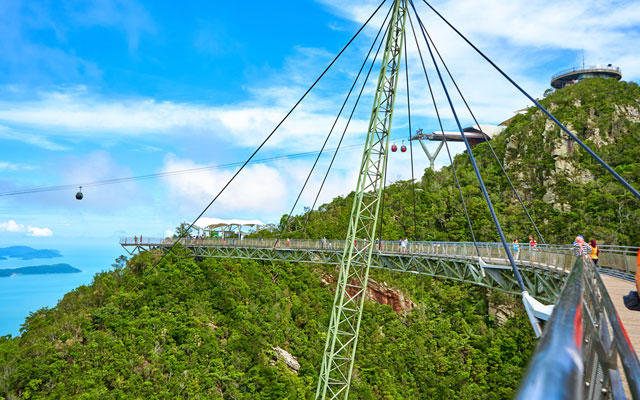Malaysia’s tourism recovery has been primarily driven by domestic leisure travel, and while the country is taking gradual steps to reopen its international border, major industry players say the domestic market will continue to be a linchpin in the road to recovery for the foreseeable future.
On November 15, Langkawi began welcoming foreign tourists back in a test case for Malaysia which plans to fully reopen its borders by January 1, 2022.

Despite the reopening timeline set by the government, it will take time for the international market to return, said Mushafiz Mustafa Bakri, CEO, Malindo Airways, at the World Islamic Tourism Conference on Monday (November 15). For the short term, the airline’s focus will be on growing capacity on the domestic segment, he said.
He added the airline is seeing demand for non-traditional tourist destinations such as Terengganu, Johor Bahru, Alor Setar and Ipoh, as domestic tourists look for new attractions and places to visit.
Yap Lip Seng, CEO, Malaysia Association of Hotels, shared that the international market will reopen in stages and recovery will take time. “We need to be prepared (for) a certain percentage of international (tourists) coming back, and still maintain domestic as our focus for the next year or so,” he said.
He stressed on the need to take care of the domestic market as that is what pays the salaries of employees in the hospitality sector.
When asked what surprised the industry about the domestic tourism market this year, Yap shared the assumption that domestic tourists are price-sensitive is not always true, and that some of them look for value.
This fresh insight will help the hotel industry in its future planning. He shared: “If hotels were to do their part and provide more value-adds into the room rates, then it could actually attract (guests) and bring up the average room rate in Malaysia, which is one of the lowest in the world.”
Both Yap and Mushafiz were panellists in a session on Domestic Tourism Revival for the Muslim Market, which looked at the performance of the domestic tourism market in Malaysia during the pandemic and projections on how it would fare with the return of international business.
Tourism players in Langkawi whom TTG Asia spoke to also concurred that the domestic segment will remain their main source of revenue for at least another year, even as they continue to market their products and services to the international market.
Mega Water Sports & Holidays director of sales and marketing, Sharmini Violet, opined that while Langkawi has rolled out the red carpet to tourists from around the world, there are still hurdles such as travel restrictions in many countries and generally higher airfares.
She said: “It is still (in the) early days (for travel recovery) and I think it will take at least a year before the international market normalises, provided the pandemic ends soon and the virus is contained.
“Our focus for the time being is on the domestic market. At the same time, we have already started regional and international marketing efforts through virtual B2B meetings organised by Tourism Malaysia.”
Sharmini shared that she noticed a trend of middle-income and upper-middle-income families who used to vacation overseas who were now choosing Langkawi as their holiday destination during the pandemic. “This is a market we want to further tap into,” she said.
Anthony Wong, managing director of Cottage by the Sea by Frangipani Langkawi, also estimated that it would take about a year for inbound travel to Langkawi to pick up. In the meantime, the resort is depending mainly on the domestic market to cover operating costs, he said.
He also shared that the island has to address the shortage of manpower as it prepares for the return of the international market. He elaborated: “Locals view a career in the hospitality and service industry as risky due to the frequent lockdowns. Foreign manpower is also hard to get.”




















